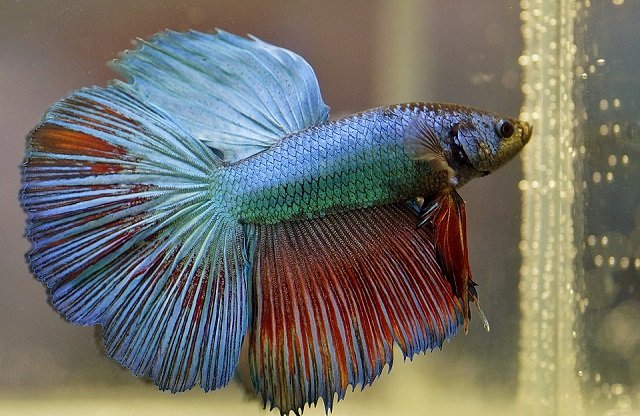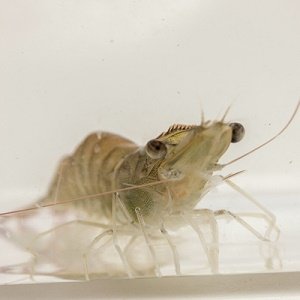
When we think about diseases on a fish farm, the first image that usually comes to mind is mortality. However, the real impact is much deeper and more complex. A recent scientific review article published in Reviews in Aquaculture delves into the concept of the “disease burden,” offering a comprehensive view that ranges from direct economic losses to the social, environmental, and reputational consequences for the European aquaculture industry.
The study, led by Francesc Padrós of the Universitat Autònoma de Barcelona, argues that to sustainably manage health in fish farming, it is crucial to understand that diseases are an imbalance between the fish, the farming environment, pathogens, and the farm’s own management practices.
What exactly is the “disease burden”?
The term “disease burden” refers to a global assessment of all impacts related to a health problem. It’s not just about counting dead fish, but about quantifying and understanding a network of consequences that affect the business’s viability.
This burden includes:
- Direct costs: Losses from mortality and morbidity (fish that get sick but do not die).
- Indirect costs: Management expenses, such as treatments, preventive measures, biosecurity, health surveillance, and insurance.
- Social and political impacts: Effects on the well-being of farm staff, public perception, social acceptance of the sector, and even the reputation of the company or an entire national industry.
The multiple fronts of economic impact
The document details how diseases directly interfere with the productivity and profitability of a fish farm.
Mortality and morbidity: two sides of the same coin
Mortality is the most obvious and widely used indicator on farms. The loss of a fish is not just the loss of a “living asset,” but also of the investment made in it (feed, time, care) and a reduction in the facility’s production capacity. Furthermore, managing carcasses (removal, transport, disposal) represents an extra cost and a health risk if not handled properly.
Morbidity, or the impact on fish that get sick but survive, is more subtle but often more costly. A sick fish has lower zootechnical performance:
Stay Always Informed
Join our communities to instantly receive the most important news, reports, and analysis from the aquaculture industry.
- It reduces its feed intake and has a worse feed conversion rate.
- It may present external lesions (ulcers, hemorrhages) or meat quality problems (melanosis) that decrease its commercial value or lead to its rejection at the processing plant.
- It becomes more susceptible to other secondary diseases.
Chronic diseases like sea lice infestations, or pathologies affecting the digestive system, can have a devastating long-term economic impact.
Management costs: a necessary but complex investment
A significant part of the disease burden comes from the costs associated with its management.
- Surveillance and diagnostics: Implementing health surveillance programs, conducting periodic sampling, and paying for laboratory analyses are necessary costs for early detection. Efficient sampling planning is key to optimizing these expenses.
- Treatments: The decision to treat a batch of fish requires a cost-benefit analysis. In aquaculture, treatments (oral or bath) are applied collectively, which involves large volumes of therapeutic products and labor.
- Oral treatments with medicated feeds are complex, expensive, and often take time to arrive at the farm, reducing their effectiveness if the fish have already lost their appetite.
- Bath treatments, although effective for external parasites, involve stressful handling for the fish and complex logistics, especially in sea cages.
- Prevention and biosecurity: Prophylaxis is the most efficient long-term strategy. Measures such as vaccination, disinfection, fallowing (sanitary break), or the implementation of physical barriers are fundamental, although they require a significant initial investment. The study highlights that, unlike other measures, the efficacy of vaccines is more quantifiable, which makes it easier to calculate their profitability.
The disease burden is not confined to the gates of the fish farm. At a macroeconomic level, severe outbreaks like those of Infectious Salmon Anemia (ISA) in Chile and Scotland have proven capable of affecting global market prices and jeopardizing the viability of an entire national industry, with serious social consequences due to unemployment.
The document also addresses the “One Health” approach, highlighting two key areas:
- Zoonotic risk: Although the risk of disease transmission from farmed fish to humans is significantly lower compared to terrestrial animals, it exists. However, most reported cases are associated more with water contamination or poor product handling than with a true zoonosis.
- Environmental impact: The transfer of pathogens between farmed and wild populations is a major concern, especially in open systems like cages. The best-known example is the sea louse (Lepeophtheirus salmonis), whose control represents an enormous cost for the salmon industry and has been shown to affect wild salmon populations.
Finally, the social and reputational impact should not be underestimated. Poor health management, high mortality rates, or the controversial use of treatments can generate negative public perception, affect consumer confidence, and damage a company’s reputation—an intangible but immensely valuable asset.
Conclusions for the sector
The study concludes that to effectively reduce the disease burden, the aquaculture industry needs to adopt a comprehensive and proactive approach. This involves not only reacting to outbreaks but also strategically investing in prevention, biosecurity, and animal welfare.
A complete visualization of all these factors will allow companies and authorities to assess the real impact of diseases, make more informed decisions, and ultimately, strengthen the sustainability and resilience of the European fish farming sector.
Contact
Francesc Padros
Fish Disease Diagnostic Service. Veterinary School. Departament de Biologia Animal, de Biologia Vegetal i Ecología, Universitat Autònoma de Barcelona (UAB)
Barcelona, Spain
Email: francesc.padros@uab.cat
Reference (open access)
Padros, F., Rodger, H., Constenla, M., Herrero, A., Glucksman, M., Allepuz, A., & Zarza, C. (2025). The Disease Burden in Fish Farm Management: An Integrative View and a Specific Vision in Europe. Reviews in Aquaculture, 17(4), e70055. https://doi.org/10.1111/raq.70055
Editor at the digital magazine AquaHoy. He holds a degree in Aquaculture Biology from the National University of Santa (UNS) and a Master’s degree in Science and Innovation Management from the Polytechnic University of Valencia, with postgraduate diplomas in Business Innovation and Innovation Management. He possesses extensive experience in the aquaculture and fisheries sector, having led the Fisheries Innovation Unit of the National Program for Innovation in Fisheries and Aquaculture (PNIPA). He has served as a senior consultant in technology watch, an innovation project formulator and advisor, and a lecturer at UNS. He is a member of the Peruvian College of Biologists and was recognized by the World Aquaculture Society (WAS) in 2016 for his contribution to aquaculture.



